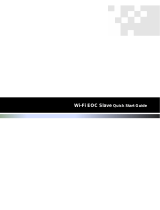
Operation Instructions | EoC 2-01 | Ethernet over Coax | WiFi
2 2015-01-1916 | © AXING AG Schweiz | Konstrukions -, Typenänderung, Irrtümer und Druckfehler vorbehalten
Contents
1. Product description ....................................................................................................................................... 4
1.1. Disposal of wastes ................................................................................................................................ 4
1.2. Scope of delivery ................................................................................................................................... 4
1.3. Field of application ............................................................................................................................... 5
1.4. Connections, indications, operating elements ...................................................................................... 6
1.5. Application examples ........................................................................................................................... 7
1.5.1. Feeding in of IP data in a SAT-IF distribution structure: ............................................................... 7
1.5.2. Feeding in of IP data in a CATV distribution structure: ................................................................ 8
1.5.3. Feed in of IP data in a headend system: ....................................................................................... 8
2. Installation and commissioning .................................................................................................................... 9
3. Basic functions ............................................................................................................................................ 10
3.1. Standby mode: .................................................................................................................................... 10
3.2. EoC Reset button: ............................................................................................................................... 10
3.3. EoC Reset Function: ............................................................................................................................ 10
3.4. WiFi WPS/Reset button: ...................................................................................................................... 10
3.5. WiFi access: ........................................................................................................................................ 10
4. EoC network with encryption ...................................................................................................................... 11
4.1. Pair or group formation: ..................................................................................................................... 11
5. Settings for the WiFi network ...................................................................................................................... 12
5.1. Accessing the configuration screen..................................................................................................... 12
5.1.1. Login .......................................................................................................................................... 12
5.2. Operation Mode ................................................................................................................................. 13
5.3. Wireless Settings ................................................................................................................................ 14
5.3.1. Wireless Basic Settings ............................................................................................................... 14
5.3.2. Wireless Security Setup .............................................................................................................. 14
5.3.3. Wireless Site Survey.................................................................................................................... 15
5.3.4. Wireless Advanced Settings ........................................................................................................ 15
5.4. Wireless Schedule ............................................................................................................................... 16
5.5. TCP/IP Settings ................................................................................................................................... 16
5.5.1. LAN Interface Setup ................................................................................................................... 16
5.6. Management ...................................................................................................................................... 17
5.6.1. Access Point Status .................................................................................................................... 17
5.6.2. Statistics ..................................................................................................................................... 17
5.6.3. Time Zone Setting ...................................................................................................................... 18
5.6.4. System Log ................................................................................................................................. 18
5.6.5. Upgrade Firmware ...................................................................................................................... 19
5.6.6. Save / Reload Settings ................................................................................................................ 19
5.6.7. Password Setup .......................................................................................................................... 20
6. Troubleshooting .......................................................................................................................................... 21
6.1. LEDs .................................................................................................................................................... 21
7. Technical data ............................................................................................................................................. 22
7.1. Data sheet .......................................................................................................................................... 22
7.2. Drilling template ................................................................................................................................. 23






















